Following Markus Anfang’s harsh sacking in April of this year, Achim Beierlorzer took over as Head Coach of FC Köln in the summer, following Köln’s promotion back to the Bundesliga. In doing so he became Köln’s third permanent manager since Peter Stöger’s departure in December of 2017. It was certainly an interesting appointment, with Beierlorzer’s combined win percentages at his last two clubs, RB Leipzig and Jahn Regensburg, being less than 40%. In this tactical analysis, I will look at FC Köln’s tactical tendencies as well as their strengths and weaknesses as a side so far under Beierlorzer.
The season so far
After beating Wehen Wiesbaden on penalties in the DFB-Pokal, Köln have won one of their first three Bundesliga games. They have been dealt a particularly difficult start to the season.
After losing to both Wolfsburg and Borussia Dortmund they managed to beat an SC Freiburg side who had started the season well by winning their first two games themselves. The fixture list doesn’t relent and Köln will face Borussia Mönchengladbach and Bayern Munich in the next fortnight.
So far Beierlorzer has preferred a 4-4-2- this formation has been used in three of Köln’s four competitive games this season, as well as throughout pre-season. This differs from last season where Köln predominantly played with five midfielders, either in a 3-5-2 or a 4-1-4-1.
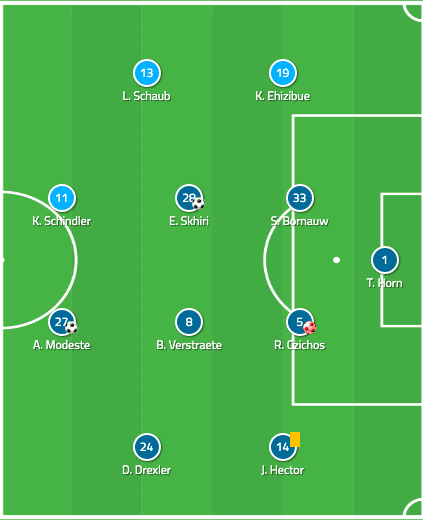
Tactical changes under Beierlorzer
Köln played excellent passing football in the 2.Bundesliga last season, with 14.5 passes per minute. This was the highest in the league. They were also league leaders for progressive passes and built attacks patiently from the back. Teams allowed them 11.52 passes per defensive action. They also pressed effectively, allowing only 8.18 passes per defensive action, better than the league average of 9.29.
It’s difficult to compare that to this season. This is partly due to the lack of games, and of course a higher playing standard. However, the data suggests there is a more direct approach under Beierlorzer compared to Anfang.
Köln leads the Bundesliga thus far for long passes per game averaging 55. This is considerably higher than the league average of 42.78. They have been accurate, with 58% of these passes meeting their target.
It is likely that Beierlorzer identified Köln’s strength in long-passing in their tactics last year, and decided it had been under-used. There is evidence to back this up, with Köln ranking eighth in the 2.Bundesiga last season for long passes per game with 51.45, and yet they ranked second-highest in the league for long pass accuracy with 61%.
This has quickly changed under Beierlorzer. In fact, 19.14% of Köln’s passes in the Bundesliga this season have been long passes, which is the highest percentage in the league.
It doesn’t seem that they are playing that many long passes when you compare their numbers under Anfang compared to those under Beierlorzer. However, whilst playing 51.45 long passes per game last year, they were making a total of 448.05 passes per game. Therefore the proportion of their passes that are long has changed significantly.
Despite being the leading passing team in 2.Bundesliga last season, they have struggled in that aspect thus far this season, and rank in the bottom five in the league for total passes, with just 302.19 passes per game. They rank in the bottom three for accuracy with 76.7%. They also rank at the bottom for progressive passes this year.
Over half of their long passes per game have come from goalkeeper Timo Horn, left-back Jonas Hector, and centre-back Sebastiaan Bornauw.
Hector and Bornauw rank sixteenth and twenty-first in the league for long ball accuracy respectively but are both over 20% behind league leader Niklas Moisander of Werder Bremen who has completed 72.41% of his long passes so far. Therefore, although both Bornauw and Hector are relatively accurate, they are certainly some way behind the best in the league, and perhaps not accurate enough to warrant so many long balls played. Moisander, on the other hand, does and is fifth in the league for total long balls played also.
Köln have used the long ball regardless of the type of side they face. Against Freiburg, who are in the bottom five in the league for passes allowed per defensive action, they attempted 74 long passes compared to 54 against Dortmund and 48 against Wolfsburg. However, despite a lower number of long passes against Dortmund, due to having only 28.33% of possession, the percentage of Köln’s passes that were long was 23.79%. This was their highest ratio for the season.
Crossing
Köln have the fourth-highest amount of crosses in the league with 16.25 per game, with a 32.7% accuracy. That’s slightly above the league average. They are consistent with where they put their crosses, with only one of their 52 crosses this season going inside the six-yard box. This differs from last season where Köln looked to hit the six-yard box more frequently. Only Holstein Kiel crossed to that area more than they did over the season.
We can see the areas they look to hit by looking at the cross-map from against SC Freiburg.
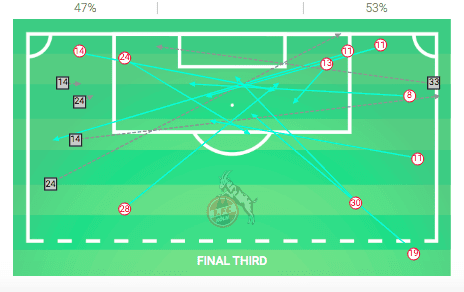
This cross-map is representative of the crossing patterns that have emerged so far under Beierlozer. There is no predominant side from which the crosses come from. This is different from Beierlozer’s predecessor Anfang, who preferred crosses to come from the right flank. Last season Köln recorded 155 more crosses in the league from the right-side than the left-side.
Beierlorzer wants his team to aim for the space between the edge of the six-yard box and the penalty spot. It has been successful, and five of the seven goals scored in all competitions under Beierlorzer have come from crosses.
The target man
Beierlozer has been keen to utilise the aerial ability of target man Anthony Modeste. The majority of long balls are aimed at the forward, and he looks to flick the ball onto players running behind him.
He is a threat in the box too, and often occupies the areas around the six-yard-box that Beierlorzer likes his wingers to cross to. We can see this by looking at his shooting map for this season so far.
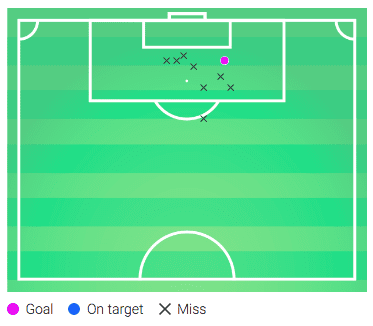
Modeste is incredibly talented in the air. His 60.66% aerial duel win percentage has only been bettered by Wout Weghorst of Wolfsburg and Borussia Dortmund’s Mats Hummels. His only goal for the season so far was a header.
His aerial prowess was underused by Anfang. Modeste scored six goals, and only one was a header. His aerial win percentage was good with a 60.6% win percentage, but he only competed in a total of 38 aerial duels. This season so far he has already competed in 33.
Beierlozer has seen that Modeste had underused talents last season, and he is undoubtedly key to the way the Köln head coach wants his side to play.
This is not to say there aren’t issues in front of goal. Köln have scored four goals but their xG is 2.83. They were the most lethal team in 2.Bundesliga last season scoring 84 goals in 34 games, but this season they are the least accurate team in the league with just 20.7% of their shots hitting the target.
Fluid attacking shape
Going forward Beierlorzer doesn’t always keep a rigid shape. He allows the second forward and two wingers the option to drop between midfield and attack. Below is a perfect example where the 4-4-2 has become a 4-3-3 with Louis Schab pushing forward on the right flank, as his left-wing partner Dominik Drexler drops deeper and narrower to make a midfield three.
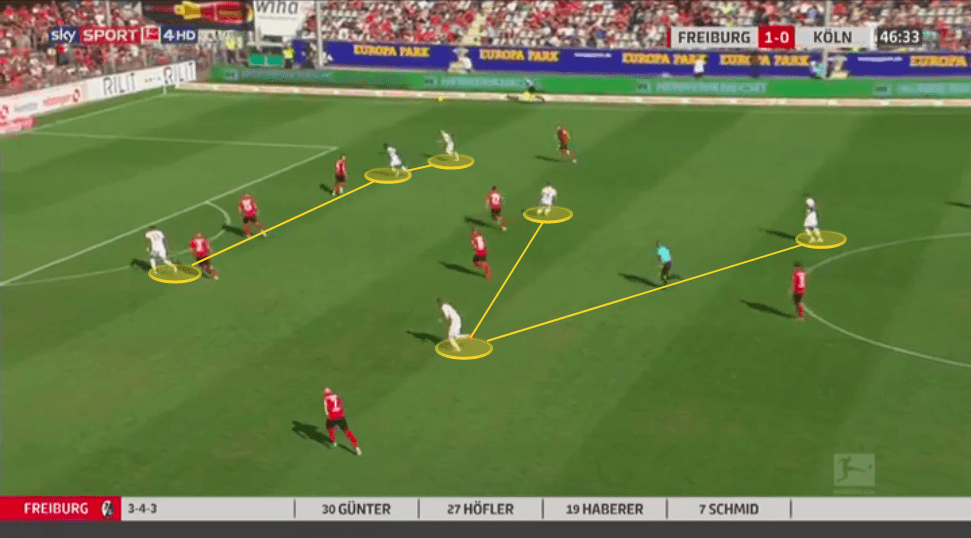
When this occurs the wingers generally play close to Modeste as the second forward- either Kingsley Schindler or Jhon Córdoba drops into the space between the opposition’s midfield and defence.
It would be easy to tarnish Köln with the title of a long ball team, but Beierlorzer can be adventurous in attack. He encourages his wing-backs to push high, and this is particularly the case when they have a narrow front-three and desperately need to add width.
Below is an example of how adventurous and fluid their attacking shape can be. They attack from a wide position with their two wing-backs providing support for what is essentially a front five.
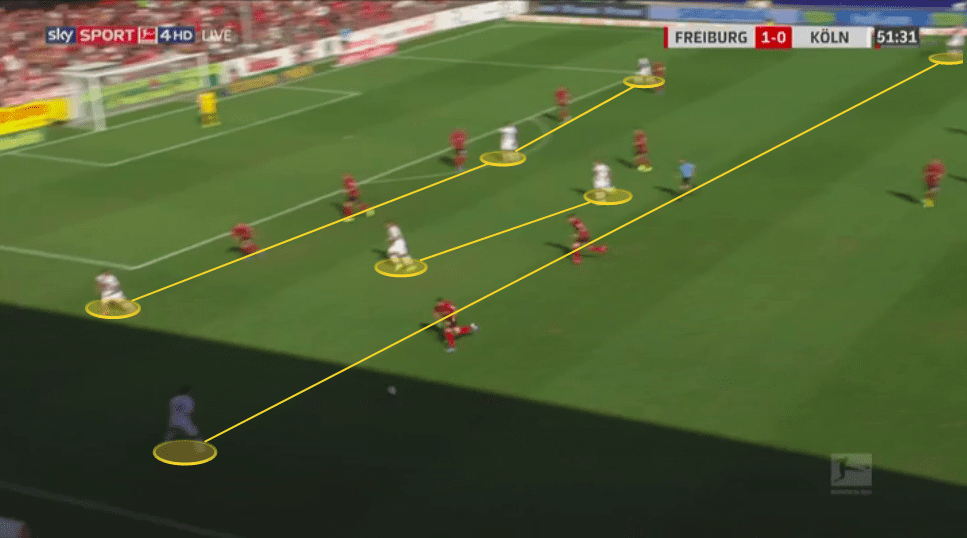
Defensive statistics
Köln have been somewhat unfortunate to concede six goals so far in the league. Expected goals against suggests it should be more than half that number with their xGA of 2.72, being the third-lowest in the league. This is behind only Bayern Munich and Wolfsburg.
Köln are excellent defending aerially in their own box. Both centre-backs Bornauw and Rafael Czichos rank in the top 10 in the league for percentage of headers won in their own box. Left-back Hector also ranks 11th.
Beierlorzer wants his teams to engage the opposition in high areas defensively too. Against both Freiburg and Wolfsburg they allowed 6.3 and 5.86 passes per defensive action respectively. However, against Dortmund they allowed a whopping 16.12 passes per defensive action, changing their philosophy completely. Lucien Favre’s side prefers patient build-up play and Beierlorzer clearly thought to try to prevent this was a poor idea. With the pace of Jadon Sancho and Thorgan Hazard on the wings, that was probably for the best.
Ignoring the Dortmund game, their games against Freiburg and Wolfsburg would make them the second most aggressive pressing side in the league.
Defensive shape
Beierlorzer often commits numbers when pressing, and it’s not unusual to see the two forwards and wingers take up advanced positions. Whilst the furthest forward player presses the ball, the other three will look to press space rather than players. There is an example of this in the analysis below.
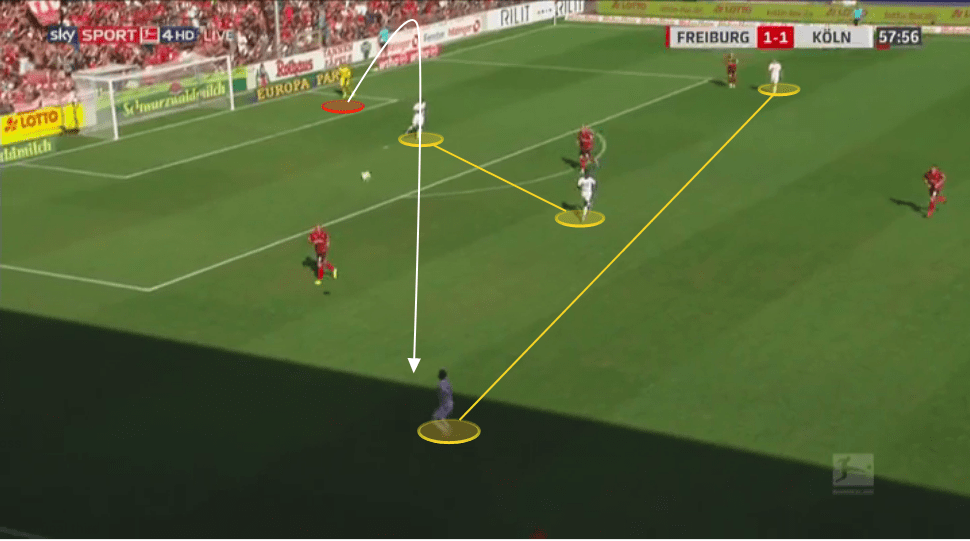
Beierlorzer encourages his wingers to defend in these higher areas to begin with, but if the opposition has the ball further forward, then naturally he expects them to drop back.
Below we can see Köln defending deeper and the defence and midfield are organized in two banks of four. The back four is particularly tight and remains so, even if the ball is played behind the lines on the flanks. The winger is expected to drop deep and cover those wider areas. We can see how both wingers are wider in this shape than their full-backs are.
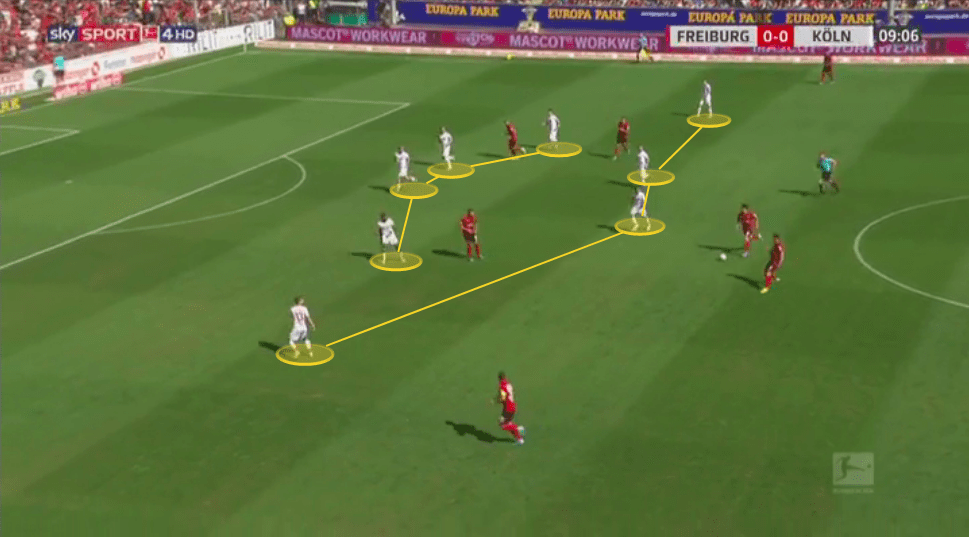
Beierlorzer expects a lot from his wingers, and they are incredibly important in their shape both when pressing and when keeping a low block. In fact, they are instrumental in the different phases of defending, from winning the ball back, to transitioning into attack. Once the ball has been won back, they are expected to quickly support the forwards, often running into space behind them. This is displayed in the image below.
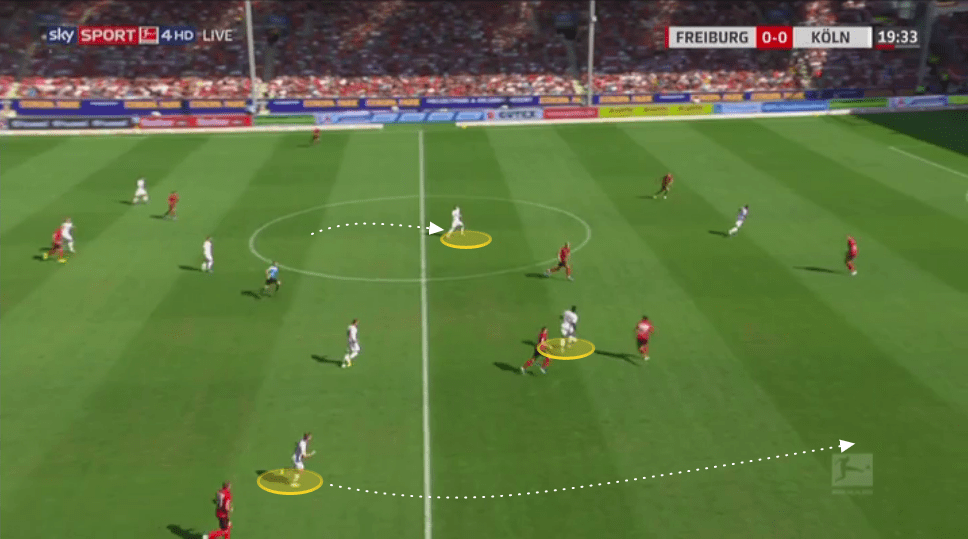
Set-pieces and goal-kicks
Having only had four free-kicks in the league so far, it is tough to see whether Beierlozer has any set piece manoeuvres. However, patterns have emerged in the last two games with his corners.
Teams need to be aware of Köln’s threat from corners with 26.4% of their attempts so far ending with a shot. In the games against Dortmund and Freiburg, Birger Verstraete took all but one of their corners. He aims to hit the six-yard line and Köln vary in how they attack these balls. However, the emphasis is on having as many players on that six-yard line as they can, attacking from a mixture of making runs or relatively static movement. What has been a constant is the man occupying the back post area in case any balls run through without a header or are flicked on to the back-post, as was done for their goal against Dortmund.
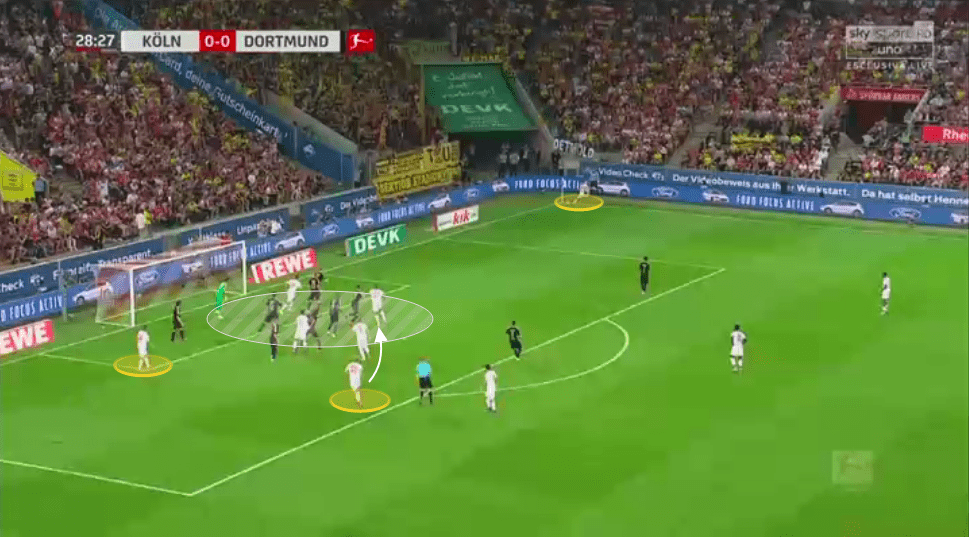
Above is an archetypal Beierlorzer corner set-up. There are four players occupying the goalkeeper’s attention by swarming around the six-yard line, close to the front-post. As mentioned there is always an attacker at the back-post and he will remain there. Finally one player attacks by making a run from the edge of the box. In the above example, he attacks from in line with the back-post to the front-post. However, if he takes up a position in line with the front-post, he will attack the back-post.
The goal-kicks depend on the defensive intentions of their opposition. Against Freiburg, who are a side that don’t prioritise pressing, all nine of Timo Horn’s goal kicks went long. However, against Dortmund, who are a pressing side, every single goal-kick was short. Beierlorzer wanted to invite the press, before using the long ball to break the defensive lines.
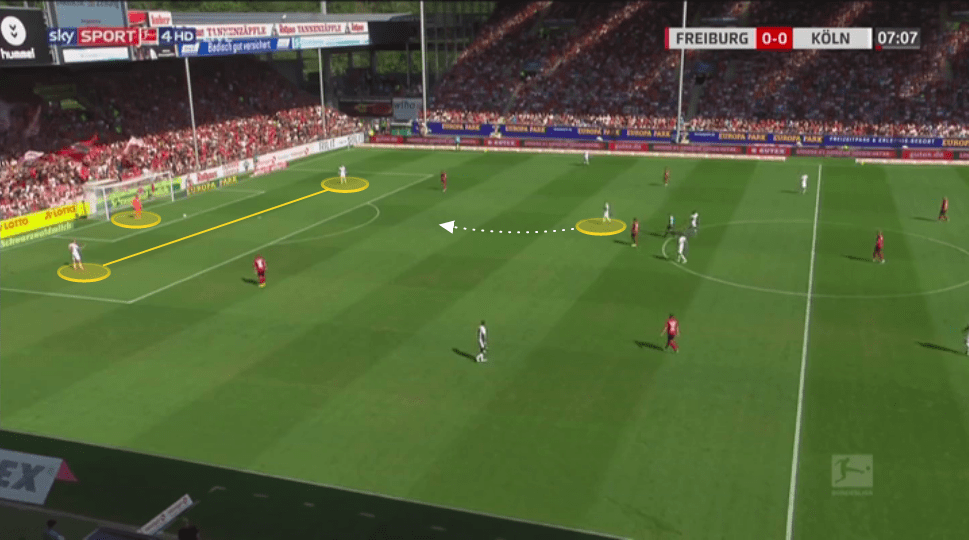
Nevertheless, there is a pattern of play that is repeated with every goal-kick. The two centre-backs split wide inside the 18-yard-box. The right-back Kingsley Ehizibue tucks inside and is not a passing option, meanwhile, left-back Jonas Hector hugs the touchline and is an option for Horn. Finally, one of the central-midfielders, usually Verstraete, drops into the space created by the two centre-backs splitting wide, as shown in the image above.
Below is a picture of the shape they take from every goal-kick.
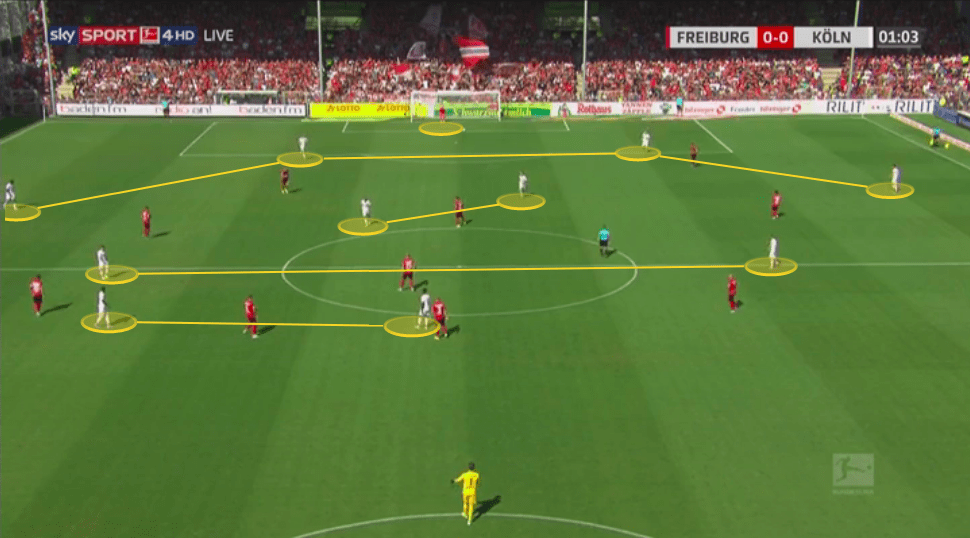
Conclusion
Beierlorzer has a task on his hands to keep Köln in the Bundesliga. However, he has inherited a confident team that were promoted as 2.Bundesliga title winners last season by a six-point margin.
He has changed their playing style pretty drastically in certain areas, after perhaps deciding that Köln weren’t going to be able to compete in the Bundesliga with the passing football that saw them promoted last year. It will be interesting to monitor their progress over the year and whether he sticks to this philosophy.
There are some undeniable strengths that this side has, and arguably Beierlorzer has capitalised on these strengths. However, there are weaknesses too, and these will need to be addressed for Köln to avoid relegation.

If you love tactical analysis, then you’ll love the digital magazines from totalfootballanalysis.com – a guaranteed 100+ pages of pure tactical analysis covering topics from the Premier League, Serie A, La Liga, Bundesliga and many, many more. Buy your copy of the August issue for just ₤4.99 here.

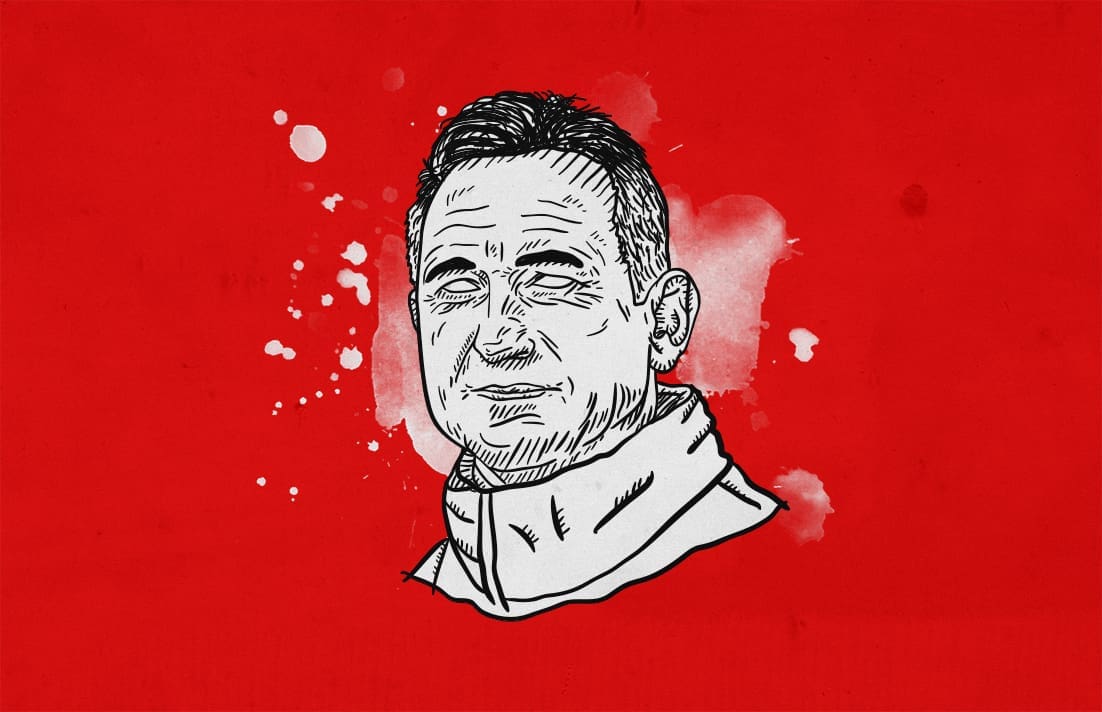



Comments